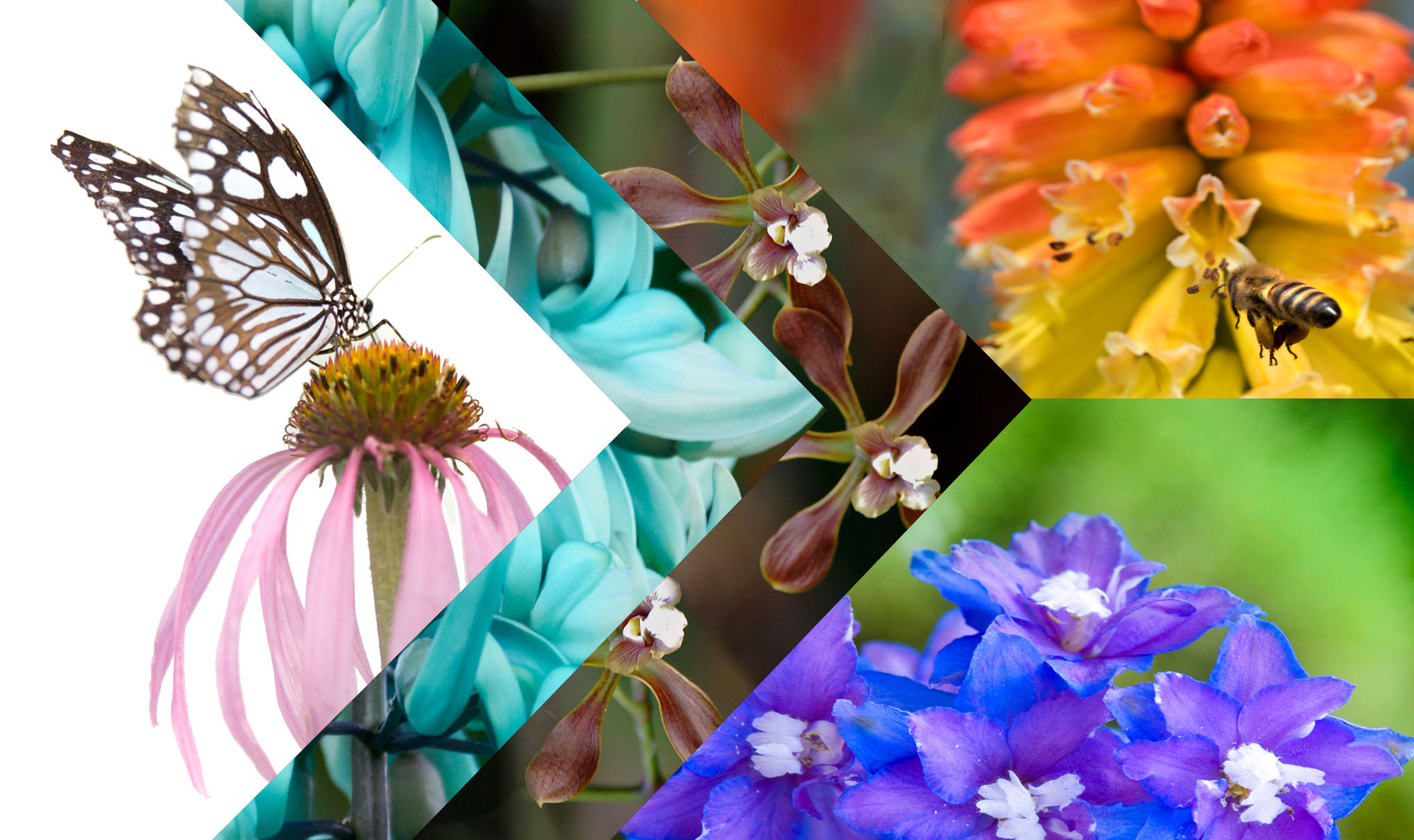

Why Pride Month Is So Beautiful: A Scientist’s Perspective
It is hard not to be enamored by the incredible flowering diversity at the Chicago Botanic Garden during Pride Month in June. With late spring flowers, such as peonies and phlox, overlapping with the early summer blooms such as echinacea and milkweed, there is an overabundance of blooms, making it a joyful month to visit our gardens.

It would be easy to draw parallels between the rainbow of summer colors and pride, but maybe that’s too obvious. And besides, as a botanist, I feel compelled to point out that the range of flower colors extends way beyond the rainbow, including browns, grays, black and white, and even ultraviolet, a color undetectable by the human eye.
While some people prefer the large bright flowers that demand your attention, others love those with a heady scent that recall wonderful memories of times past, and still others prefer the subtle or small delicate blooms that only reveal themselves to the curious observer. To me, this diversity of form and expression speaks to the almost universal appeal of flowers.
Yet the beauty of blooms is not directed at us. These colors, displays, and scents we love are perfectly designed to allow these immobile plants to attract a matchmaker—a proverbial bird or a bee, but sometimes a moth, fly, or even the wind.
The diversity of pollinators might be the very reason for the diversity of flowers; more interactions beget more diversity. Regardless of the cause, what is undeniable is that plants have come up with hundreds of thousands of ways to reproduce.
This overwhelming diversity of flowers is something that has not gone unnoticed by scientists. The variation in flowering plants is so immense that Charles Darwin himself called it the “abominable mystery.”
The question of why flowers are so successful, and more importantly, why there are so many, continues to puzzle scientists to this day, and we may never fully know the answer.
However, what is clear is that the natural world favors diversity of form. What is also critical to this mystery is that the natural world considers this diversity necessary. Studies have shown over and over again that when diversity serves no value, it rarely persists. So, we scientists may be perplexed by this huge amount of diversity, and often, we do not know what role specific diverse forms play in species' survival.
To me, Pride Month reminds us to celebrate that, like flowers, people also come in all types, forms, and expressions. June was chosen for Pride Month to mark the anniversary of the Stonewall Riots in 1969, which happened during a repressive social and legal period for LGBTQIA+ people within the United States.
This month, we are asked not only to honor the history and voices of the LGBTQIA+ community but also to promote self-affirmation and equality. I think, like science, society can struggle with understanding and accepting why this large amount of diversity exists, and, as a result, we will often hear the phrase, “I don’t understand.”
This, in science, drives our passion for learning more. Unfortunately, in society, it is often used to justify racial, homophobic, and misogynist ideology. We may never fully understand why so much diversity exists, but the natural world has shown me that there is no ideal form and no singular way to exist.
So, as a scientist with 30 years of experience, I have come to appreciate that understanding biological diversity is a lifelong endeavor. Still, I also know that like most gardeners, I do not need the understanding to be enamored by the sheer beauty and diversity of floral forms that exist.
Like me, the Garden is also on a journey of understanding. It is one of our core organizational values. We are trying to better understand the diversity of needs of visitors and staff. Our long-term goal is to create a place where community members feel a sense of belonging, joy, and fulfillment. We know the path may be long and challenging, but we will not let our lack of understanding stop us from appreciating and valuing diversity, because compassion and appreciation do not need understanding to happen.
Jeremie Fant, Ph.D., is a senior conservation scientist at the Chicago Botanic Garden. Dr. Fant’s research interests include rare and threatened species, and the conservation of genetic diversity.


